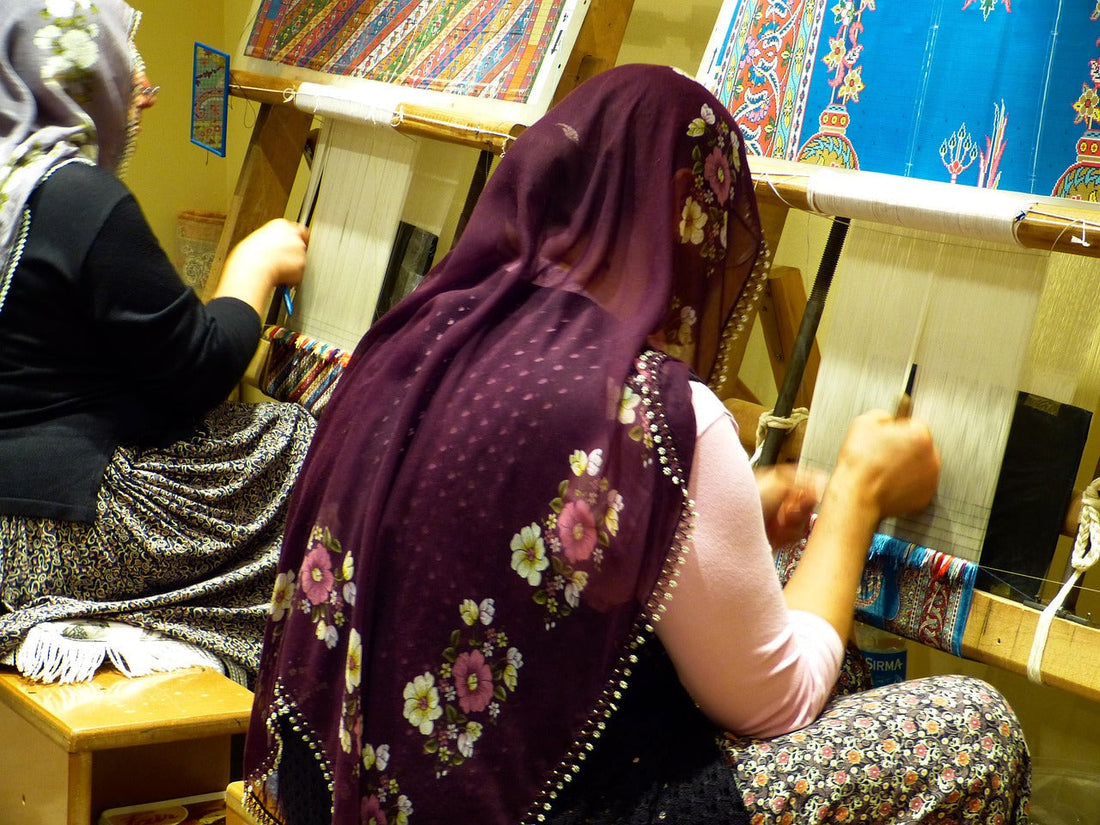
Green Threads
Are Oriental Rugs finally getting the recognition they deserve? Today, you may find many in Museums across the country or selling at auctions from simple old rugs to highly desirable antique rugs selling for thousands or its not unheard of going into millions of pounds. And yet, amidst all this, it can sometimes be easy to forget where it all started. It is the simple knots and threads that when joined together, make up the textile that we would call a rug.
The process of making workshop handmade rugs is far from straightforward. It often requires huge levels of organisation, teamwork and and above all, skill. As with the village and tribal rugs the simplicity of basic tools requires not only skill but time and endurance. Most of the rugs you will find at SIEZ Gallery are made from wool. In order for the spun wool to change into a different colour, it will need to dipped into a dying vat.
For best results the artisans will use vegetable or plant dyes in order to achieve a natural looking effect. For example, madder is often used in Persian rugs to create red, whilst Indigo is used in many Caucasian rugs for blue. Once its dyed and dried, it will then be stretched out onto a loom. In a process that can take time, it is knotted and woven together in order to create the finished piece. Throughout this whole operation, there are no synthetic colours added, and there is no mechanical technique used to speed up the process. It is all made painstakingly by hand, using only natural wool and natural dyes. Therefore, each rug is very environmentally friendly, and made in a way that only uses the natural resources in a sustainable manner. Unfortunately, these methods of production have declined over the last 100 years or so, as the grasp of technology and consumerism takes a grasp on all corners of the world. As a result, the villagers and nomads can no longer simply make rugs for their own family and for their own income.
Today's demand means that large factories now produce countless artificial copies to be shipped out to customers across the western world. This has not only damaged the quality of the rugs but has had a huge environmental impact. Therefore, these weavers were almost beyond their time: their intuitive use of locally sourced products shows that they were not only fantastic artists, but were also stewards of the natural environment around them.
